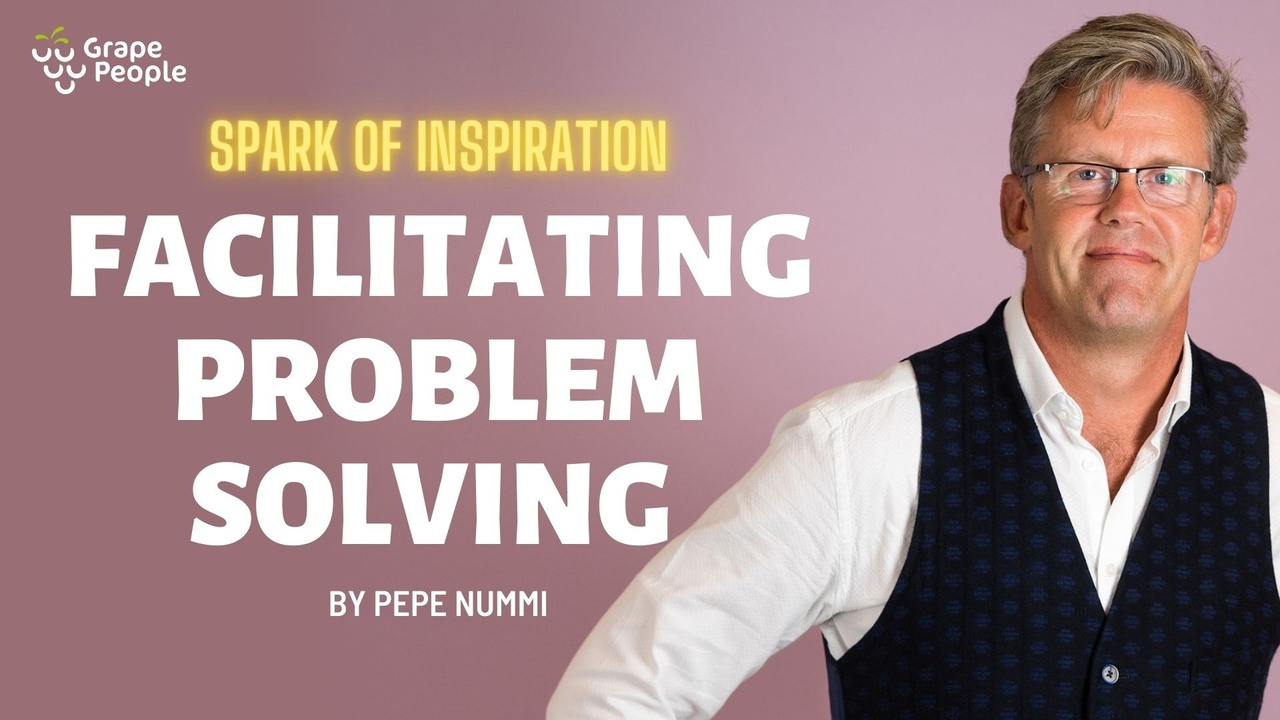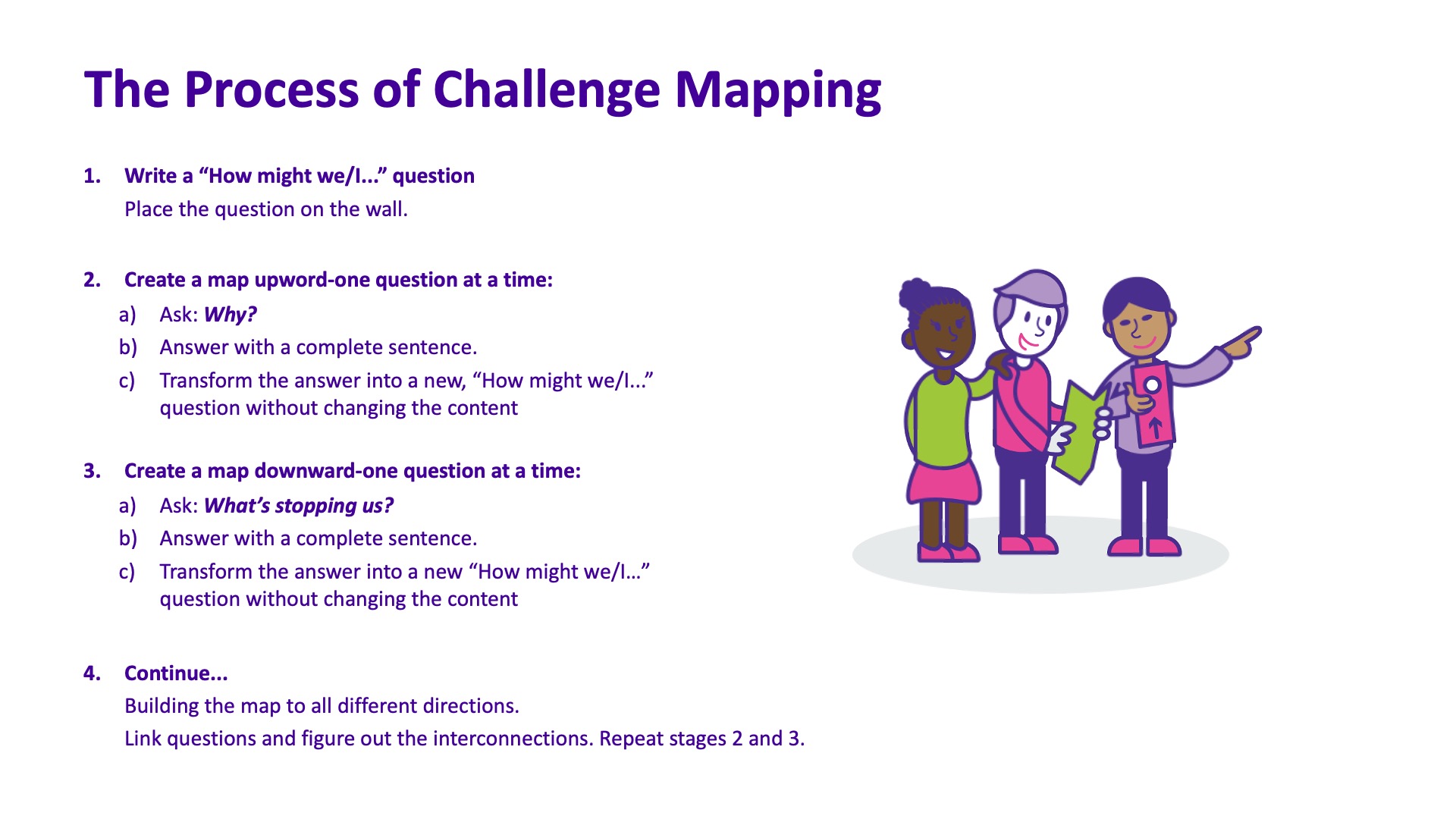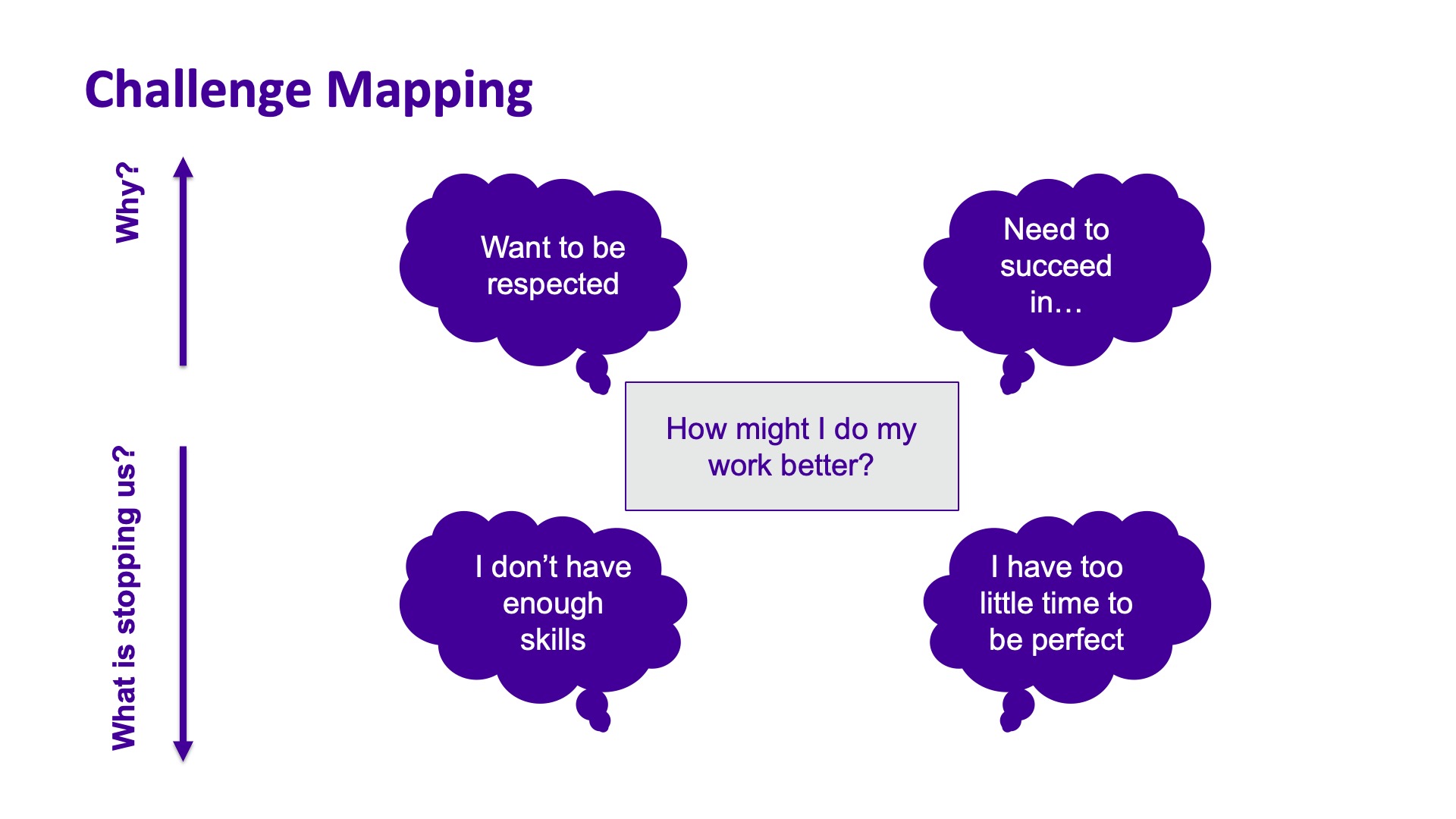Spark of Inspiration: Facilitating Problem Solving

Sometimes there is an obstacle that gets in the way of forward progress. Optimistic people tend to call these things challenges. Others call them problems. And very frustrated people might call them major headaches. When an unexpected problem comes up, it can cause us to get discouraged. We have all been in a situation where a problem is staring us in the face, and we do not have an answer. Often, answers are hard to find because we are not asking the right questions. Thankfully for us, there is a tool called Challenge Mapping that I use to negotiate complex problems.
Challenge Mapping helps people ask the questions that cut to the core of difficult problems. Asking the right questions often reveals the desired answers. Challenge Mapping creates understanding by reframing a problem through repeated rounds of questioning. I trust this tool, which has helped me resolve crises with friends and family members. It can be demanding to use, but it delivers consistent and impactful results. In this Spark of Inspiration, I want will share with you how you can reframe difficult problems and facilitate problem solving by using Challenge Mapping.
Use Challenge Mapping to dig deep into complex problems
Challenge Mapping is the perfect method for clarifying a problem when you need to dig deeper. It gets to the why that lies behind a problem and leads to discoveries.
The first step of Challenge Mapping is to make a list of How might we/I… questions relating to the topic or problem at hand. Let’s suppose you find yourself on a tight budget, and you decide to start with the following question: How might I save money?
The next step is to build off that question by asking why:
- Why do you want to save money?
Answer the question and then turn that answer into a new How might I/we question:
- I want to save money so I can go on vacation.
- Why do you want to go on vacation?
Continue this line of questioning to build the Challenge Map upward and explore the broader factors that lie behind a problem. When you look at a problem and ask, why?, it reframes the problem and explores the motives and factors that shape the problem and make it important. When you ask why, it places a problem into a broader context and builds a challenge map up.
Challenge Mapping also helps outline specific challenges and obstacles to solving a problem by asking, “What is stopping me?”. When you ask this question, it places a problem into a narrower context and requires you think about more specific details. This builds the Challenge Map downward. You should switch from asking why to asking What’s stopping me/us… when you cannot build the Challenge Map any higher.
To recap, you begin with a problem and can ask why to enter broader levels of analysis and build your Challenge Maps up. You also can ask What’s stopping up… to dig deeper into a problem and build your Challenge Map down. Sometimes, you will find that new problems spring up that require you to start a new Challenge Map. If a new challenge appears on the map, you can place it next to the original challenge and build the map downwards again.
 A common problem for people new to Challenge Mapping is how to know when to stop building the map upward. Is there a suggested amount of why questions? Should the map stop after a certain point? The answer here is quite simple. You will notice that the answers to the why questions will get broader and broader until the participant building the map will begin answering in circles and reach a point where they cannot go to a broader level. You will know you reached this point when people start to give answers about their childhood, parental issues, or other vague Freudian replies. Once the top is reached, you can begin building the map downwards. The map should also be expanded. Any issues appearing on the Challenge Map can become the centre of the mapping process, and you may construct new branches using the why and what’s stopping us questions. Sometimes folks end up making maps that look like spider webs expanding outwards, upwards and downwards. There is no limit to how large a map can be.
A common problem for people new to Challenge Mapping is how to know when to stop building the map upward. Is there a suggested amount of why questions? Should the map stop after a certain point? The answer here is quite simple. You will notice that the answers to the why questions will get broader and broader until the participant building the map will begin answering in circles and reach a point where they cannot go to a broader level. You will know you reached this point when people start to give answers about their childhood, parental issues, or other vague Freudian replies. Once the top is reached, you can begin building the map downwards. The map should also be expanded. Any issues appearing on the Challenge Map can become the centre of the mapping process, and you may construct new branches using the why and what’s stopping us questions. Sometimes folks end up making maps that look like spider webs expanding outwards, upwards and downwards. There is no limit to how large a map can be.
Facilitators have many ways to simplify problems
Challenge Mapping is a great tool to help groups tackle sticky problems, but you, the facilitator, can do a few simple things to make the tool easier to use. Just like you should be doing whenever you lead a workshop, off, be sure to visualise as much as possible. Write down clear instructions that are visible to everyone at all times. Also, maintain a good presence by making yourself available to answer questions or provide support. Challenge Mapping can be difficult to use, especially for those who have never tried it before, so you will need to be available when working with people new to the tool.
Challenge Mapping is helpful in both my personal and professional life. It is a tool I use professionally as a facilitator and I also use it to help troubleshoot problems with colleagues and friends. I also use it by myself. If I find myself worrying about the same problem repeatedly, I will use challenge mapping to see the problem in a new light. I suggest trying it out, and what better time than right now? You don’t need anything but a pencil and a piece of paper, and a problem you want to fix. I don’t know about a pencil or paper, but I bet you have a problem or two that you might want to clarify with Challenge Mapping. If you enjoy the process, then you can add Challenge Mapping to your toolbox and help others facilitate problems, too.
If you wish to learn more about these topics,
check out our upcoming training >>
⭐ Learn more about Breakthrough Decision Making >> ⭐
About the trainer:
Pepe Nummi is a trailblazer of facilitation and an author in Finland. He is the first certified professional facilitator in the country and one of the founders of Grape People – Finland’s first company focusing on facilitation. Over the course of his long career, he has trained over 15,000 people in more than 20 different countries.
Get to know Pepe: LinkedIn | Twitter
Feel free to reach out in case you would like a tailored training
for your team or organization: [email protected].
We are more than happy to help you!




